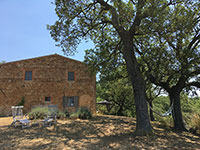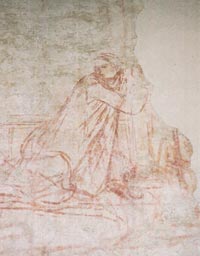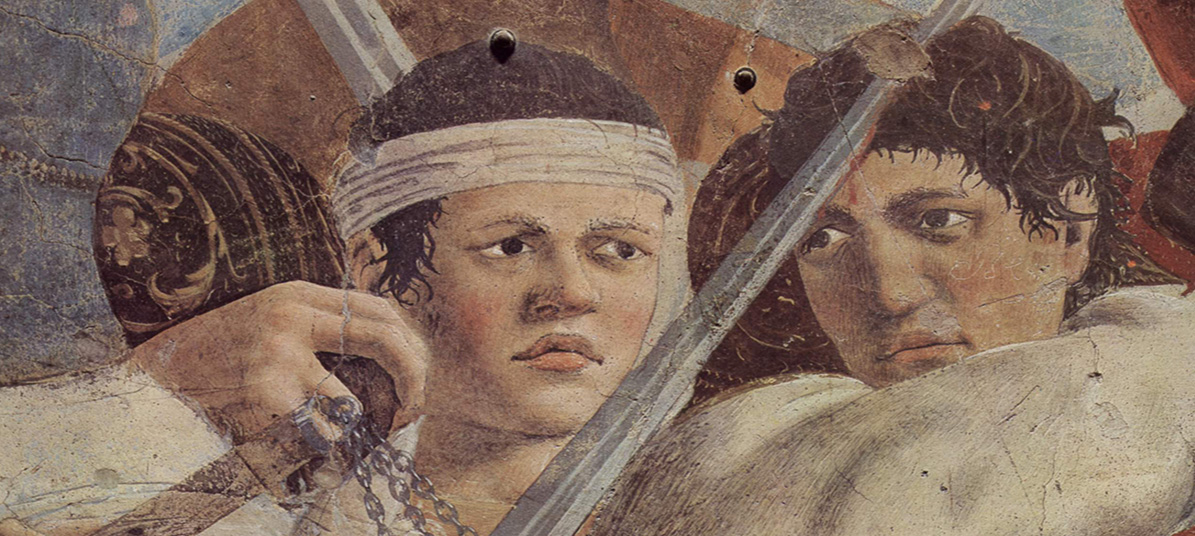| |
|
|

|
|

|
 
|
 |
Since the early nineteenth century, Tuscany, with its capital Florence, has been celebrated for the beauty of its Medieval and Renaissance art and culture. For centuries, the creativity of the Tuscan architects, sculptors and painters was unparalleled in the Western world.
The major Tuscan art towns and cities are also Tuscany main sights, from the famous Piazza del Campo a Siena with the form of a seashell, Pisa’s Leaning Tower, the stupendous dome of Florence’s cathedral, to the magnificent uplands south of Siena, the Tuscan Maremma.
Tuscany has some of the very best art galleries in the world. These include the Uffizi Gallery, the Bargello Museum and Santa Croce Museum.
Mediaeval era and the Renaissance is the epoch which also left the enormous quantity of art masterpieces in Tuscany. Tuscany is known for its beautiful landscapes, its rich artistic legacy and vast influence on high culture. Tuscany is widely regarded as the true birthplace of the Italian Renaissance, and has been home to some of the most influential people in the history of arts and science, such as Dante Alighieri, Francesco Petrarca, Giovanni Boccaccio, Sandro Botticelli, Raffaello Santi, Giotto, Donatello, Michelangelo, Leonardo da Vinci, Giorgio Vasari , Puccini and many others. Due to this, the region has several museums, most of which (such as the Uffizi and the Pitti Palace) are found in Florence, but others in towns and smaller villages.
There are 453 museums and galleries in ten provinces of Tuscany which makes it the leader among other regions of Italy. Many museums have got archaeological profile because of the Etruscans who assimilated with Romans. Both highly developed cultures left a great number of traces of their settlements. Now these samples are exhibited in museums of Maremma, Florence, Volterra, Arezzo, Siena, Chiusi, Piombino, Cortona which also present art exhibits of ancient Egyptians and Longbeards (Langobards). Besides, there are numerous archeological parks in Tuscany where the most important excavations are being protected from climate and people by the Italian government. The spots of archaeological historical monuments illustrating B.C. period cover practically the whole coast of the Tyrrhenian and Ligurian Seas (provinces of Grosseto, Livorno, Pisa, Lucca).
In medieval period and in the Renaissance, there were four main Tuscan art schools which competed against each other: the Florentine School, the Sienese School, the Pisan School and the Lucchese School. Some of the best-known artists of the Florentine School are Brunelleschi, Donatello, Michelangelo, Fra Angelico, Botticelli, Lippi, Masolino, and Masaccio.
The Sienese School of painting flourished in Siena between the 13th and 15th centuries and for a time rivalled Florence, though it was more conservative, being inclined towards the decorative beauty and elegant grace of late Gothic art. Its most important representatives include Duccio, whose work shows Byzantine influence; his pupil Simone Martini; Pietro and Ambrogio Lorenzetti; Domenico and Taddeo di Bartolo; Sassetta and Matteo di Giovanni. Siena rivalled Florence in the arts throughout the 13th and 14th centuries: the important late medieval painter Duccio di Buoninsegna (1253–1319) was a Sienese, but worked across the peninsula, and the mural of Good Government by Ambrogio Lorenzetti in the Palazzo Pubblico, or town hall, is a magnificent example of late-Medieval/early Renaissance art as well as a representation of the utopia of urban society as conceived during that period. Siena's cathedral, the Duomo, begun in the 12th century, is one of the great examples of Italian romanesque architecture. Inside is the famous Gothic octagonal pulpit by Nicola Pisano (1266–1268) supported on lions, and the labyrinth inlaid in the flooring, traversed by penitents on their knees. Within the Sacristy are some perfectly preserved renaissance frescos by Ghirlandaio, and, beneath the Duomo, in the baptistry is the baptismal font with bas-reliefs by Donatello, Ghiberti, Jacopo della Quercia and other 15th century sculptors. The Museo dell'Opera del Duomo contains Duccio's famous Maestà (1308–1311) and various other works by Sienese masters.
Unlike the naturalistic Florentine art, there is a mystical streak in the Sienese art, characterised by a common focus on miraculous events, with less attention to proportions, distortions of time and place, and often dreamlike coloration. In the 16th century, the Mannerists Beccafumi and Il Sodoma worked there. While Baldassare Peruzzi was born and trained in Siena, his major works and style reflect his long career in Rome. The economic and political decline of Siena by the 1500s, and its eventual subjugation by Florence, largely checked the development of Sienese painting, although it also meant that a good proportion of Sienese works in churches and public buildings were not discarded or destroyed by new paintings or rebuilding. Siena remains a remarkably well-preserved Italian late-Medieval town.
One of the distinguishing features of Renaissance art was its development of highly realistic linear perspective. Giotto di Bondone (1267–1337) is credited with first treating a painting as a window into space, but it was not until the demonstrations of architect Filippo Brunelleschi (1377–1446) and the subsequent writings of Leon Battista Alberti (1404–1472) that perspective was formalised as an artistic technique. The development of perspective was part of a wider trend towards realism in the arts. To that end, painters also developed other techniques, studying light, shadow, and, famously in the case of Leonardo da Vinci, human anatomy. Underlying these changes in artistic method, was a renewed desire to depict the beauty of nature, and to unravel the axioms of aesthetics, with the works of Leonardo, Michelangelo and Raphael representing artistic pinnacles that were to be much imitated by other artists. Other notable artists include Sandro Botticelli, working for the Medici in Florence, Donatello another Florentine and Titian in Venice, among others.
 |
|
events
exhibitions
art in tuscany
walking in tuscany
wines
films set in tuscany
gardens
the best beaches in tuscany
crete senesi
val d'orcia
market days in tuscany
|
| |
|
Pietro Aldi Piero della Francesca Domenico di Bartolo Taddeo di Bartolo Duccio di Buoninsegna Gentile da Fabriano Fra Angelico Giotto di Bondone Sandro Botticelli Andrea del Castagno Donatello Matteo di Giovanni Giovanni di Paolo Benozzo GozzolDomenico Ghirlandaio Ambrogio Lorenzetti Pietro Lorenzetti Il Maestro dell'OsservanzaAntonello da Messina Simone Martini Lippo Memmi Il Perugino Pinturicchio Sassetta (Stefano di Giovanni) Luca Signorelli Il Sodoma Lippo Vanni Vecchietta, Lorenzo di Pietro Bartolo di Fredi
|
|
|
| |
|
|
|
|
| |
|
Holiday accomodation
|
|
events |
|
art
|
|
|
| |
|
 |
|
 |
|
![Tracey Emin. Sex and Solitude, Palazzo Strozzi, Florence, exhibition catalogue]](https://lh3.googleusercontent.com/pw/AP1GczNpQ7N55fWdzNQ6Z41VLEFIevUaBovRlfkfeZVNLlGpnFowslv2941hN87DwCQpemDdhE7QQhaj4uG3gG1JTvI8DOD6PktGQ3qZ6KodHR6BExRQlwI-=w1000-h1204-p-k)
|
|
|
| |
|
Podere Santa Pia, a formal cloister in the Tuscan Maremma is situated on the outskirts of Castiglioncello Bandini.
Read some reviews

Private swimming pool
|
|
Exhibitions in Tuscany, Daniel Buren. “Fare, disfare, rifare” [Pistoia]
|
|
Tracey Emin. Sex and Solitude, Palazzo Strozzi, Firenze
|
|
|
| |
|
|
|
|
|
|
|
|
| |
|
|
|
Archive
|
| |
|
|
|
AMBROGIO LORENZETTI. INSIDE THE RESTORATION
Complesso museale Santa Maria della Scala, Siena (Italy)
From 5th December 2015
The frescoes of the Hermitage of Montesiepi, near the Abbey of San Galgano are being restored and are temporarily on view in Siena.
For the occasion of the event-exhibition dedicated to Ambrogio Lorenzetti, planned for 2017, a working site of open restoration has been set up in the spaces of Santa Maria della Scala old hospital in Siena. The frescos of San Galgano chapel in Montesiepi are under observation there.

|
| |
|
Ambrogio Lorenzetti, Madonna col Bambino tra San Pietro, San Paolo, una Santa martire e San Michele Arcangelo (particolare), tempera su tavola, Siena, Chiesa di San Pietro in Castelvecchio. (Foto Marcello Formichi, Soprintendenza Belle Arti e Paesaggio di Siena, Grosseto e Arezzo, 2015) |
|
|
| |
|
|
|
|
|
|
|
|
| |
|
 |
|
|
|
|
|
|
| |
|
13th-14th - century
Gothic and the beginning of the Renaissance style
|
|
15th - century
Renaissance |
|
|
|
16th century
High Renaissance and Mannerism |
| |
|
A
Andrea di Bologna
Andrea di Bonaiuto da Firenze
B
Bartolomeo Bulgarini
Bartolomeo da Camogli
Benedictus
C
Caporali, Bartolomeo
Catarino
Cimabue
D
Dietisalvi di Speme
Duccio di Buoninsegna
G
Gentile da Fabriano
Giotto di Bondone
Giovannetti, Matteo
Giovanni da Milano
Guglielmo Veneziano
Guido da Siena
Guido di Graziano
J
Jacobello del Fiore
Jacobello di Bonomo
Jacopo di Cione
L
Lippo Memmi
Lorenzetti, Ambrogio
Lorenzetti, Pietro
Lorenzo Monaco
Lorenzo Veneziano
M
Martini, Simone
Master Bertram
Master of Aringhieri
Master of Badia a Isola
Master of Citta di Castello
Master of Elsino
Master of Faenza
Master of Giovanelli Madonna
Master of Leningrad Diptych
Master of Maesta Gondi
Master of Monteoliveto
Master of Panzano
Master of Saint Veronica . N
Nelli, Ottaviano
Niccolo di Segna
Nicolo di Pietro
P
Paolo Veneziano
Pisano, Andrea
Pisano, Giovanni
R
Rinaldo da Siena
S
Salimbeni, Jacopo
Salimbeni, Lorenzo
Segna di Buonaventura
Stefano di Sant`Agnese
Sweerts, Michiel
T
Taddeo di Bartolo
Taddeo Gaddi
Traini, Francesco
U
Ugolino di Nerio
Unknown Artists
V
Vigoroso da Siena
|
|
A
Alberti, Antonio
Alberti, Leon Battista
Andrea di Bartolo
Andrea di Giusto Manzini
Angelico, Fra
Antonello da Messina
Antoniazzo Romano
Antonio da Viterbo
B
Baccio d'Agnolo
Baldassare d'Este
Baldovinetti, Alesso
Barbari, Jacopo de'
Bartolomeo da Miranda
Bartolomeo della Gatta
Belfuco, Pietro
Bellini, Giovanni
Bellini, Jacopo
Belliniano, Vittore
Benaglio, Francesco
Benedetto da Maiano
Benvenuto di Giovanni
Bergognone, Ambrogio
Berruguete, Pedro
Bertoldo di Giovanni
Biagio di Antonio Tucci
Bicci di Lorenzo
Blaz Jurjev Trogiranin
Boccati
Bonfigli, Benedetto
Botticelli, Sandro
Botticelli, workshop of
Botticini, Francesco
Bramante, Donato
Bregno, Andrea
Brunelleschi, Filippo
C
Carnevale, Fra
Carpaccio, Vittore
Castagno, Andrea del
Cima da Conegliano
Colantonio
Cossa, Francesco del
Coustens, Pieter
Cristoforo di Geremia
Crivelli, Carlo . D
Delitio, Andrea
Domenico di Bartolo
Domenico di Michelino
Domenico Veneziano
Donatello
E
Ercole del Fiore
Erri, Agnolo degli
F
Faffeo, Cristoforo
Filarete
Foppa, Vincenzo
Francesco di Giorgio Martini
Fungai, Bernardino
G
Gatti, Saturnino de
Ghiberti, Lorenzo
Ghirlandaio, Domenico
Giambono, Michele
Giovanni Antonio da Pesaro
Giovanni d'Alemagna
Giovanni da Gaeta
Giovanni di Francesco Toscani
Giovanni di Giusto
Giovanni di Paolo
Girolamo da Cremona
Girolamo di Giovanni
Gozzoli, Benozzo
J
Jacopo del Sellaio
Jacopo della Quercia
|
|
L
Laurana Luciano
Laurana, Francesco
Leonardo da Vinci - drawings
Leonardo da Vinci - paintings
Lippi, Filippino
Lippi, Fra Filippo
Littemont, Jacob deM
Mantegna, Andrea
Masaccio
Masolino da Panicale
Master of Andria
Master of Barberini Panels
Master of Life of Mary
Master of Osservanza
Master of Pala Sforzesca
Master of San Giovanni of Capestrano
Master of Valencia Altarpiece . Matteo di Giovanni
Melozzo da Forli
Menegello di Giovanni de Canali
Mezzastris, Pier Antonio
Mino da Fiesole
Montagna, Bartolomeo
N
Neroccio de Landi
Nicola di Maestro Antonio di Ancona
Nicolo di Liberatore
O
Orioli, Pietro di Francesco
P
Pagano, Francesco
Paolo, Giannicola di
Pasti, Matteo de
Perugino, Pietro
Pesellino, Francesco
Pier Francesco Fiorentino
Piero del Massaio
Piero della Francesca
Piero di Cosimo
Pietro di Galeotto
Pietro di Giovanni d'Ambrogio
Pintoricchio
Pisanello
Pollaiuolo, Antonio del
Pollaiuolo, Piero del
Predis, Ambrogio de
R
Robbia, Luca della
Roberti, Ercole
Rosselli, Cosimo
S
Sano di Pietro
Santi, Giovanni
Sassetta
Scacco, Cristoforo
Signorelli, Luca
Strozzi, Zanobi
T
Tura, Cosme
U
Uccello, Paolo
Unknown Artists
V
Verrocchio, Andrea del
Vico, Enea
Vivarini, Alvise
Vivarini, Bartolomeo
Z
Zoppo, Marco |
|
A
Arcimboldo, Giuseppe
B
Bandinelli, Baccio
Barocci, Federico
Bartolommeo, Fra
Bassano, Jacopo
Beccafumi, Domenico
Boltraffio, Giovan Antonio
Bronzino, Agnolo . Bugiardini, Giuliano
C
Carraci, Annibale
Cellini, Benvenuto
Correggio
Costa, Lorenzo
F
Fontana de Zappis, Lavinia
L
Lorenzo di Credi
M
Michelangelo . P
Pontormo
Procaccini Carlo Antonio
R
Raphael
Romano, Giulio
S
Andrea del Sarto
Salai
T
Titian
V
Vasari, Giorgio
Veronese, Paolo |
| |
|
|
|
|
|
|
|
|
| |
|
Foto: Piero della Francesca, dettaglio dal ciclo di affreschi della Leggenda della santa Croce nel coro della Basilica di San Francesco ad Arezzo. |
|
|
| |
|
|
|
|
|
|
|
|
| |
|
|
|
|
|
|
|
|
| |
|
|
|
|
|
|
|
|
| |
|
|
|
|
|
|
|
|
| |
|
|
|
|
|
|
|
|
 |
|
|
 |
 |
|
